What was your first byline in Trains?
Scott Hartley: My first Trains feature article appeared in the February 1980 issue, a four-page report on Amtrak’s Alco RS3 fleet. Editor David Morgan had occasionally used my photos and opinion columns, but this was my first real article. It was a tough sell: In 1980, Alcos clearly were on their way out on large railroads, but they were by no means rare. And Amtrak’s RS3s were not attractive, as they toiled in lowly work train and switcher service wearing dreary, tattered Penn Central black paint. I suspect that Managing Editor Dave Ingles (himself a big Alco fan) might have persuaded “DPM” that I had a worthy story. I regret that I never asked either of them.
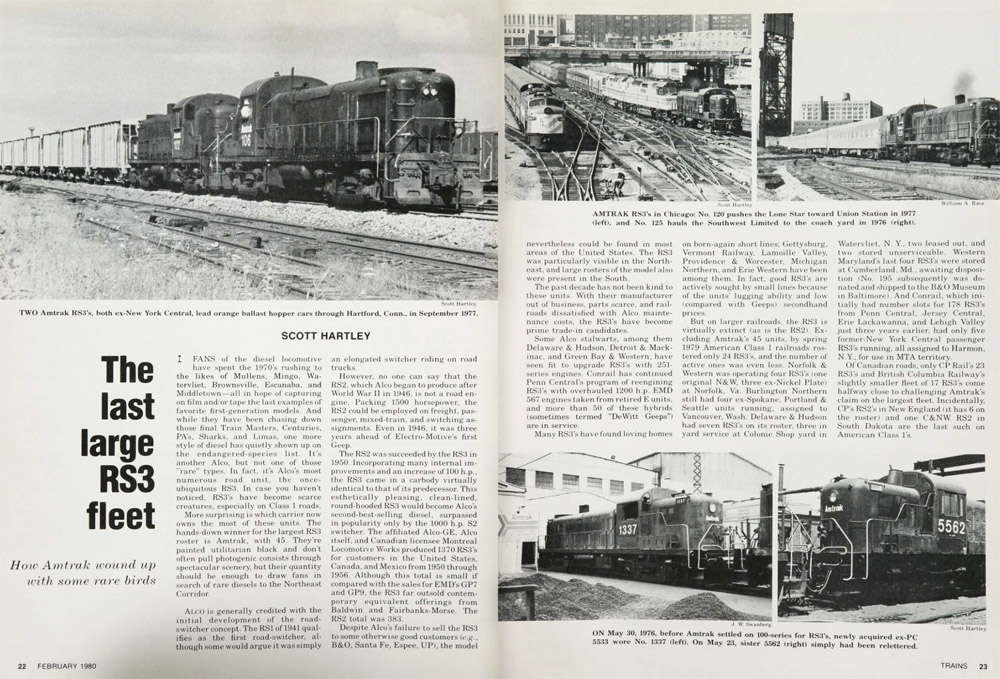
What’s your favorite locomotive and why?
Scott Hartley: It may seem natural that the RS3 would be my favorite locomotive. My local railroad, the New Haven, owned 45 RS3s, and they were plentiful on nearby Boston & Maine and New York Central as well. I may have missed RS3s handling New Haven’s named trains and hottest freights, but I did witness one later-day RS3 passenger assignment, a daily round trip over the railroad’s New Haven, Conn.-Springfield, Mass., line. Quite conveniently, my fifth-grade classroom overlooked the tracks, which led to a report card with “unsatisfactory conduct” checked because of my inattentiveness. Not discouraged by that mark on my permanent record, I continued to watch NH’s RS3s as they lived on in service on Penn Central, and later Amtrak and Conrail. In 1985, I joined a group of Railroad Museum of New England members who contributed to the purchase of former New Haven RS3 No. 529 from Amtrak. And I would later have the opportunity as a locomotive engineer to run No. 529 for many years on the museum’s Naugatuck Railroad. (No. 529 has been out of service for more than a decade, but RMNE currently is working to restore it to operation.)
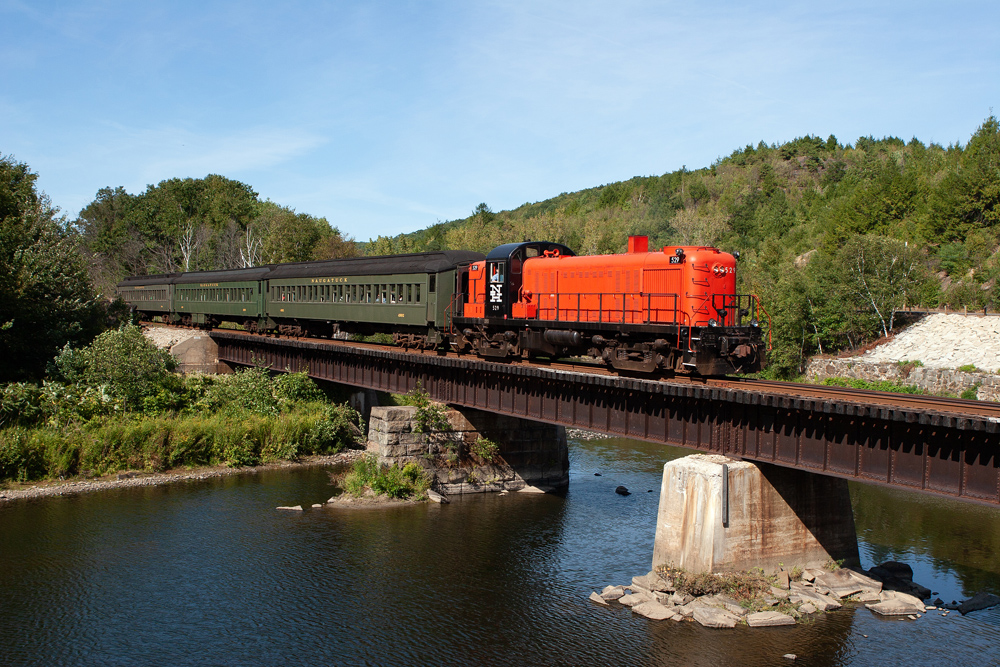
Describe your love of railroading in six words or less.
Scott Hartley: Motion, sound, and efficient transportation.
What’s your fondest memory as a Trains contributor?
Scott Hartley: After my parents retired to Southwest Florida, my visits there over the years led to several Trains features. CSX always was a good host, providing access to see, ride, and report on its famous Tropicana unit “Juice Train,” the extensive Bone Valley phosphate operations, and coal trains running to the Orlando Utilities Commission’s Stanton Energy Center. Through these projects, I met many talented and dedicated railroaders and other professionals, learned a great deal about Florida railroading, and saw lots of the Sunshine State.
What article received the biggest reader reaction?
Scott Hartley: It probably was another Florida story … Today, U.S. Sugar’s sugarcane field railroads and its common-carrier South Central Florida Express are well known to fans, primarily because of the company’s recent steam excursion program using a beautifully restored former Florida East Coast 4-6-2. My U.S. Sugar feature story (“100% Pure Cane Sugar,” December 2015 Trains) was the first exposure many readers had to a large and interesting rail operation in a state better known for CSX, FEC, and Disney.
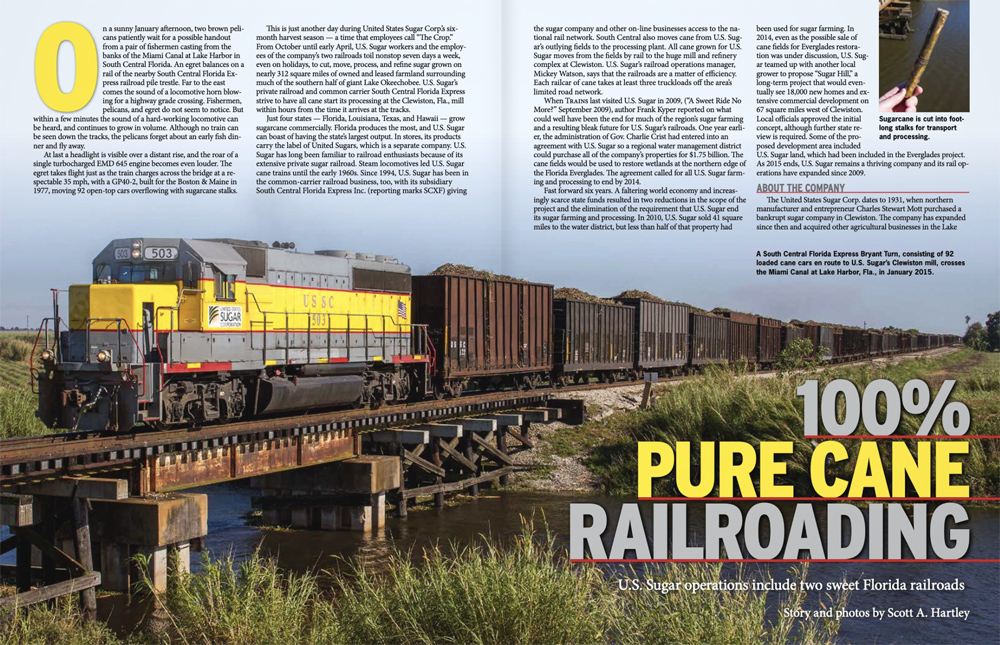
What advice would you give a new contributor?
Scott Hartley: I concur with the suggestions already made by others in this series. So, some of the following probably is repetitive.
Start out with photo submissions, with an emphasis on newsworthy subjects. Get them in as soon as possible. Digital photography, processing software, and Kalmbach Media’s upload system make it easier than ever for your work to appear online and in print. Pictures should tell the story (a news photo of a BNSF locomotive passing a CSX station sign in New York is more likely to be used instead of a picture of the same train taken somewhere in the woods).
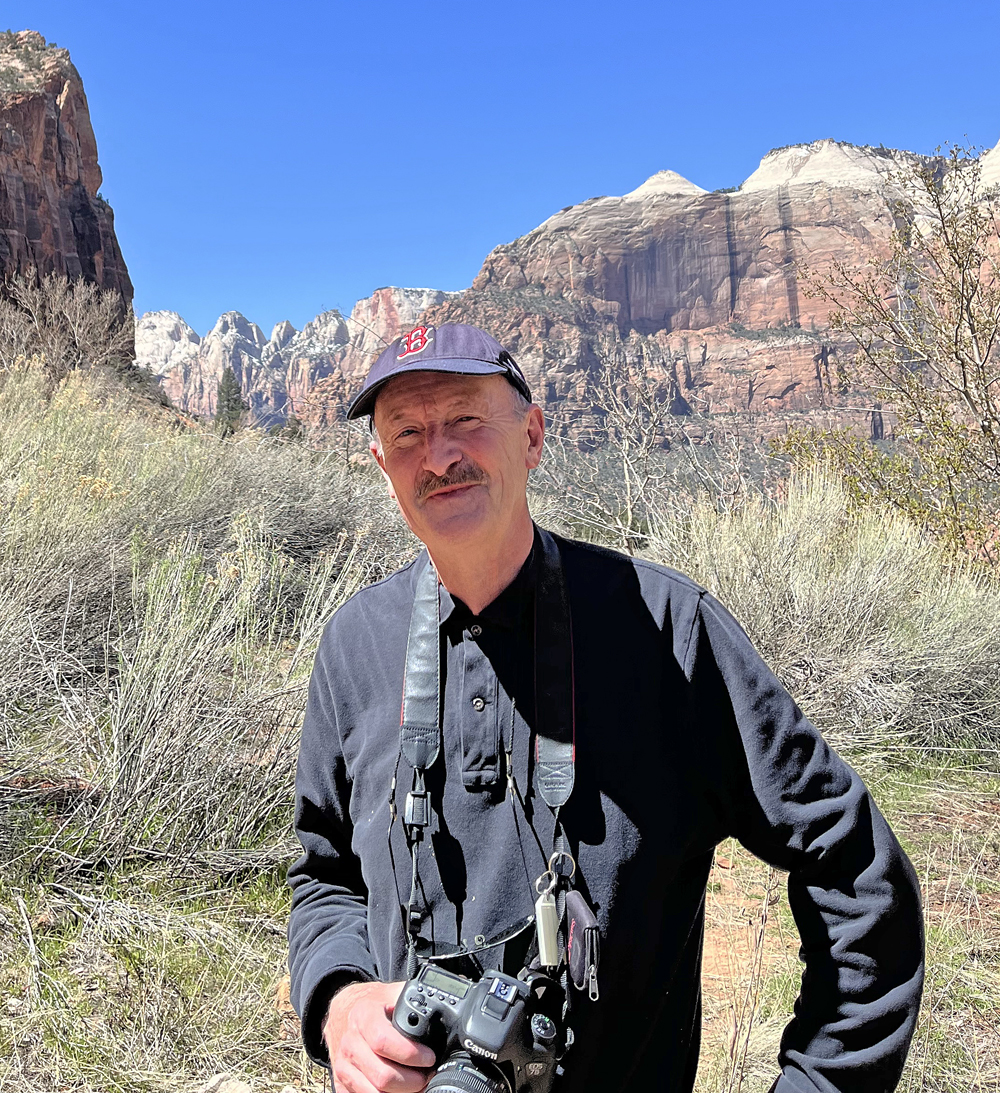
Regardless, always use the “comments” box to tell the editors the significance of what they are looking at when you upload photos. Look at the photos that are used in Trains Magazine and on Trains.com to get a feeling for what editors choose. Avoid submitting pictures of a subject that had been covered recently — no matter how good yours are! Editors usually look for fresh material. And if you choose to be a Trains contributor, you should stick with that. You do not want to be known for sending similar photos of a single subject to several publications simultaneously!
As editors become familiar with your photo work, start thinking of feature stories that you feel you could cover. Contact the editors with your proposal before you begin to devote a lot of time to your project. … Someone might be working on a similar story already. Many railroads and operations are overdue for coverage, and you likely know of possible subjects near you. Gather your own photos to assemble a complete package to submit. Once you receive the editors’ go-ahead, get going on the project and try to finish it up quickly.
Strive for accuracy; you may know more about the subject than the editors who will edit your story before it is posted or published. Before submitting your article, ask a knowledgeable friend to check it for clarity and accuracy. (I much prefer to have a friend point out my errors than hear about it later from readers!)
And keep Trains editors up to date on your progress. They are busy but cordial, and always are happy to help new authors. Don’t be afraid to ask for their guidance. Good luck!






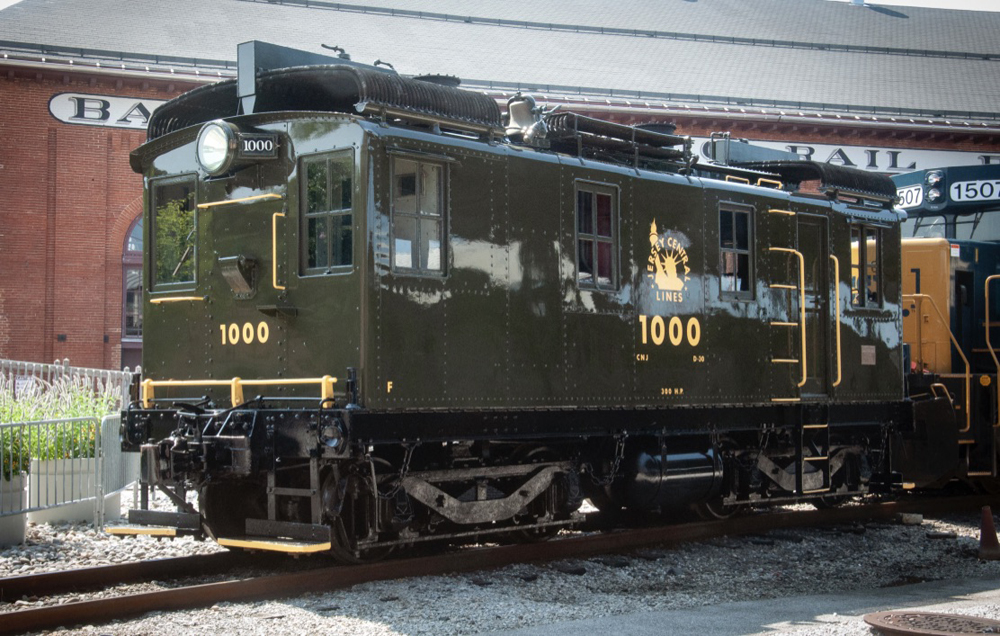

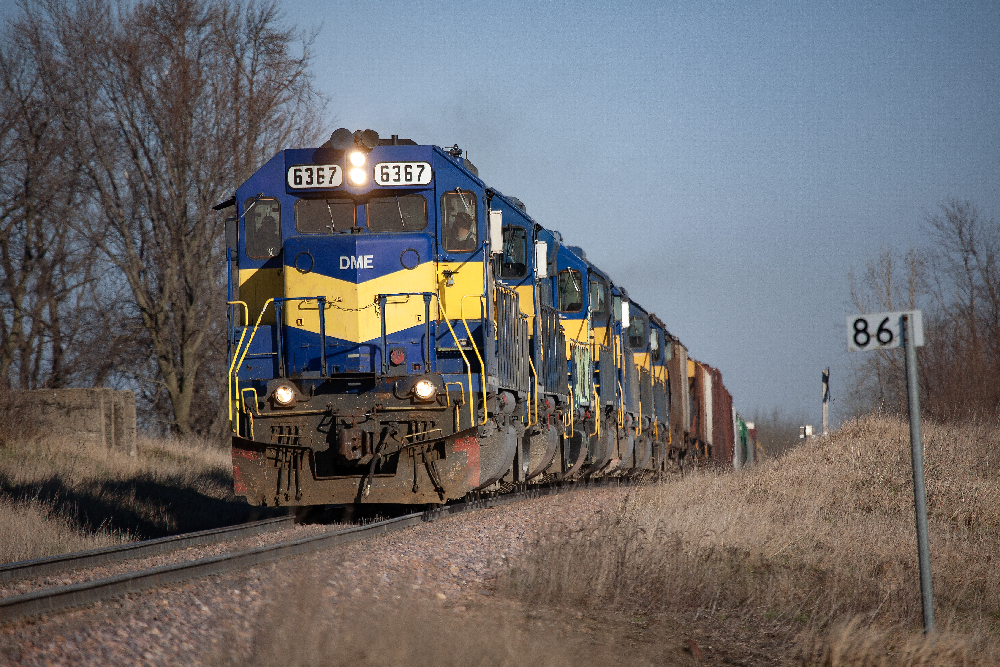
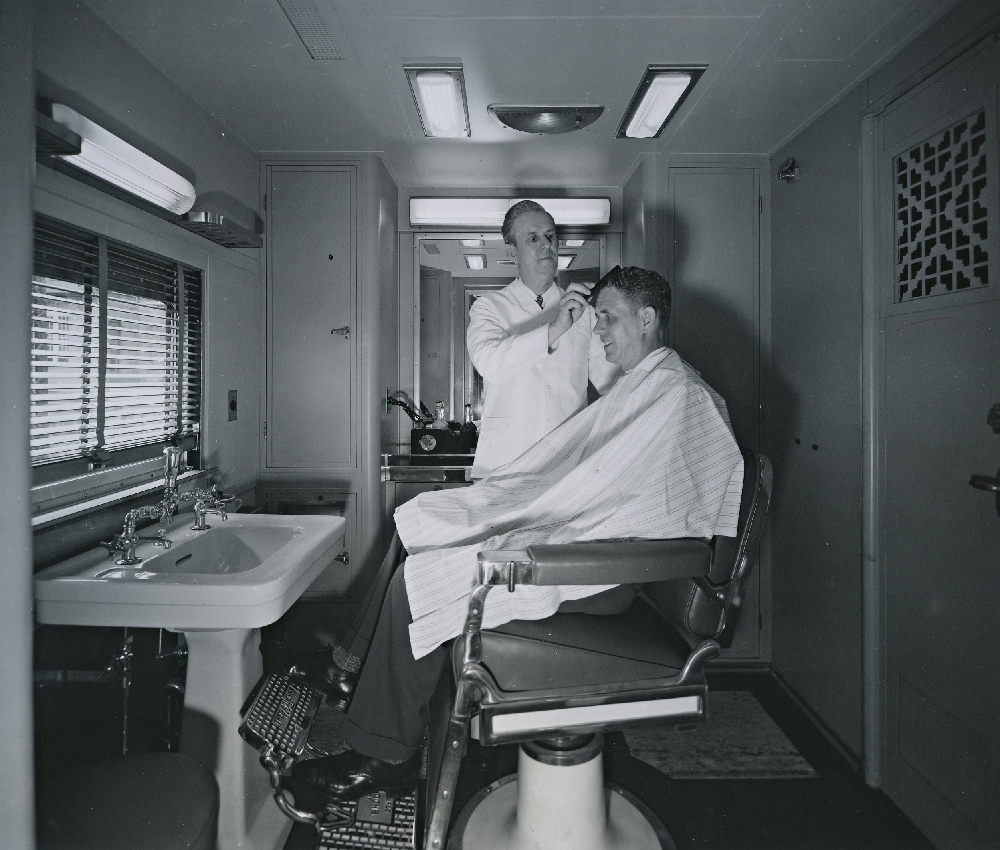




I believe the old Rutland RR had Alco’s of this stripe back in the days of their operation. That line is now VT Rail Systems.
Rutland RR went bankrupt in the early 1960’s.
I love TRAINS magazine, but as a one time contributor, I offer the following advice. Do not give up all your rights of ownership to the magazine. Always best to only offer “First Time Rights.” Then after publication the rights revert back to you.
A paltry monetary sum is never worth losing control of your material. I would rather provide my material for free as long as I don’t lose it.
Keeping control allows you to revise and improve your material for future use.
Great advice from a really talented guy.